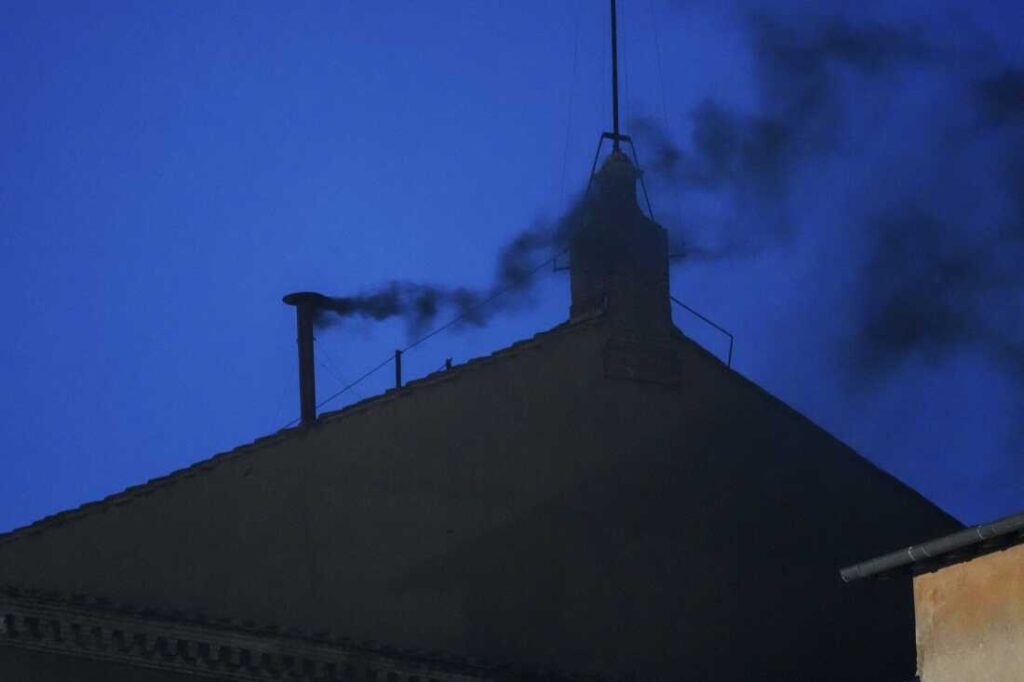Cardinal Prevost (Robert Francis Prevost) was elected Thursday as the 267th Pope of the Roman Catholic Church, becoming the first Pope from the United States.
President Donald Trump called the event “a great honor for the United States.”
For years, there was a common belief that Popes were not chosen from global superpowers. But this election broke with tradition, placing an American at the head of the Catholic Church.
The new Pope Cardinal Prevost has taken the name Pope Leo XIV. In his first address from the Vatican balcony, he called for global peace.
“A united Church that always seeks peace and justice,” he declared.

Pope Prevost will soon face major decisions that could shape the future of the Catholic Church and its 1.4 billion followers around the world.
Leading up to the vote, cardinals were divided—some wanted to continue Pope Francis’s inclusive policies, while others leaned toward a more conservative direction.
In the middle of this divide, 69-year-old Cardinal Prevost emerged as a “compromise candidate.” In his first speech, Pope Leo XIV emphasized the “need for connection” to the crowd gathered at St. Peter’s Square.
His election sparked celebrations not only in the Vatican, but also in his hometown of Chicago and in Peru, where he served for more than two decades.
The cardinals had spent nearly 24 hours in conclave at the Sistine Chapel, voting through several rounds. A total of 133 cardinals participated—making it the largest conclave in history.
Most of the cardinals were appointed by Pope Francis. Many came from remote corners of the world and didn’t even know each other. With such diversity, reaching consensus was a challenge, especially with differing visions for the Church’s future.
Who Is the New Pope, Cardinal Prevost?
Robert Francis Prevost is 69 years old and was born in Chicago. He spent over 20 years in Peru, where he became a bishop and even obtained Peruvian citizenship. He later went on to lead his international religious order.
Before Pope Francis’s death, Cardinal Prevost led one of the Vatican’s most influential offices—overseeing the selection and supervision of bishops worldwide.
He is a member of the religious order Order of Saint Augustine. His compassion for the poor and displaced reflects the same pastoral spirit seen in Pope Francis. In an interview with Vatican media, he once said, “A bishop shouldn’t be sitting in a palace.”
Prevost has spent most of his life outside the U.S. He was ordained a priest in 1982 at the age of 27. He later earned a doctorate in canon law from the Pontifical University of Saint Thomas Aquinas in Rome.

In Peru, he served as a missionary, parish priest, teacher, and bishop. Fluent in Spanish and Italian, he traveled widely as the head of the Augustinian order.
Where He Stands on Major Issues
Prevost is generally described as thoughtful and reserved. While his leadership style may differ from Pope Francis’s, many believe he will continue the “consultative process” initiated by Francis—a system encouraging dialogue between bishops and laypeople.
His views on LGBT Catholics remain unclear. He has made no recent public comments on the issue. However, in a 2012 speech, he expressed concern, saying Western media and culture were promoting values that clashed with Biblical teachings. He specifically criticized the “homosexual lifestyle” and “alternative families formed by same-sex couples.”
As an American citizen, Prevost may take a different tone than many conservative Catholics in the U.S. Notably, he stood in opposition to the aggressive image of religious power embraced by the Trump administration.
Before becoming Pope, a social media account associated with him had posted criticism of the Trump administration’s immigration policies.
Still, like many Catholic leaders, he has faced scrutiny over his response to priests accused of child sexual abuse.
Who Elected the New Pope?
After Pope Francis’s death, a conclave began on May 7 to elect his successor. Cardinals—often called the “Princes of the Church”—make up the College of Cardinals, which is directly below the Pope in rank. The current College includes 252 members.
Only cardinals under the age of 80 are allowed to vote, totaling 135 in this conclave—the highest number in Church history. Pope Francis appointed nearly 80% of them.
When a Pope dies or resigns, these cardinals gather in secrecy to vote until one candidate receives a two-thirds majority.
After each round of voting, the ballots are burned in a special stove. A chemical is added to the fire to produce colored smoke—black for a failed vote, white for a successful one. Crowds in St. Peter’s Square watch the chimney for this sign.

How Long Did the Election Take?
Election times vary throughout Church history. This was only the fifth conclave since 1900 where a new Pope was chosen in just two days.
The longest conclave in modern times was in 1922, when it took 14 votes over five days to elect Pope Pius XI. Pope Francis also took two days to be elected.
The shortest was in 1939, when Pope Pius XII was chosen after just three rounds.
But elections haven’t always been quick. For instance, Pope Gregory X’s election lasted nearly three years—it wasn’t completed until September 1, 1271.
The Catholic Church’s Biggest Challenges
The cardinals faced a tough decision: should they follow the direction set by Pope Francis or choose a different path?
During his 12-year papacy, Pope Francis made bold moves—like allowing blessings for same-sex couples and strongly supporting refugees. These decisions energized progressives.
But they also sparked internal disagreements. Many conservative leaders opposed his changes.
And the division goes beyond just liberal vs. conservative. Across the Vatican and the global Church, heated debates continue over women’s roles, the place of LGBT Catholics, priestly celibacy, and accountability for abuse by clergy.
Read More : What is a conclave, how does the pope get elected?
